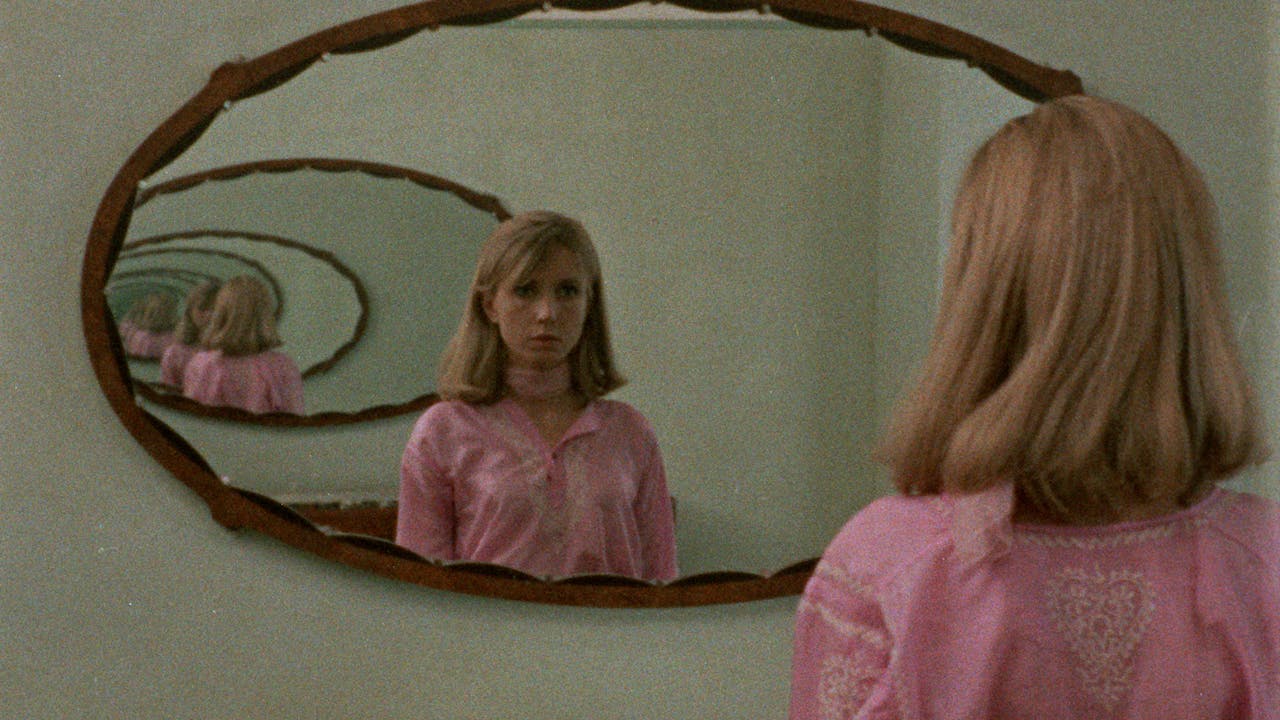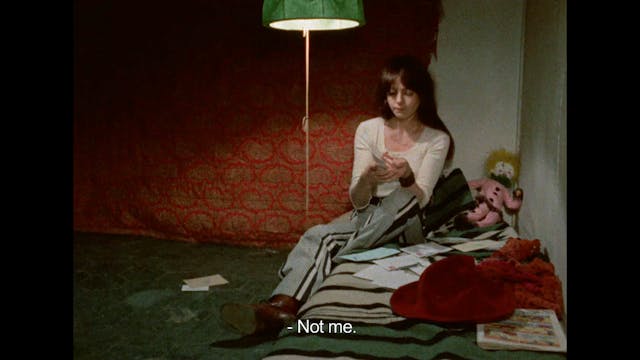OUT 1: Noli me Tangere
Over eight episodes, a cast of French New Wave icons improvise a spellbinding tale involving two theater troupes rehearsing Aeschylus, a female con artist (Berto) who seduces her victims, and a deaf-mute (until he speaks) busker (Léaud) on a quest to uncover a mysterious secret society. As the characters’ paths crisscross and the film’s puzzle-box structure grows ever more elaborate, a portrait of post-May 1968 Paris and its dashed dreams emerges. The result is a cinematic experience unlike any other, in which, as Rivette himself put it: “the fiction swallows everything up and then self-destructs.”
-
Out 1 - Theatrical Trailer
-
Episode 1: From Lili to Thomas
Rivette instantly establishes his playful, no-rules reality as two theater troupes rehearse avant-garde versions of Aeschylus plays climaxing in an epic, hypnotic warm-up exercise that unfolds like a primal, clothed orgy. We are introduced to a deadpan, deaf-mute busker (Jean-Pierre Léaud) and Fr...
-
Episode 2: From Thomas to Frédérique
The outlines of a conspiracy begin to emerge as the mute busker begins receiving cryptic letters with references to Balzac and Lewis Carroll’s The Hunting of the Snark. Meanwhile, theater rehearsals take an unsettling turn.
-
Episode 3: From Frédérique to Sarah
The mystery of the enigmatic notes deepens as the busker learns about their connection to Balzac’s History of the Thirteen. Elsewhere, tensions flare up at rehearsals.
-
Episode 4: From Sarah to Colin
The various strands of the story begin to intersect. The busker continues on his quest to uncover the source of the cryptic letters, while Frédérique is also inadvertently drawn into the conspiracy. Games—cops and robbers, chess, and cons—abound.
-
Episode 5: From Colin to Pauline
Frédérique finds that blackmail doesn’t pay as she crosses paths with the busker who is now in love with Pauline (Bulle Ogier)—or is it Emilie? Meanwhile, a wild goose chase through Paris ensues when one of the productions is fleeced out of money.
-
Episode 6: From Pauline to Emilie
Maps, symbols, codes, card games, and double meanings: the intrigue starts to accelerate.
-
Episode 7: From Emilie to Lucie
Cracks in the conspiracy begin to appear and things really start to get trippy.
-
Episode 8: From Lucie to Marie
And then the narrative implodes...









